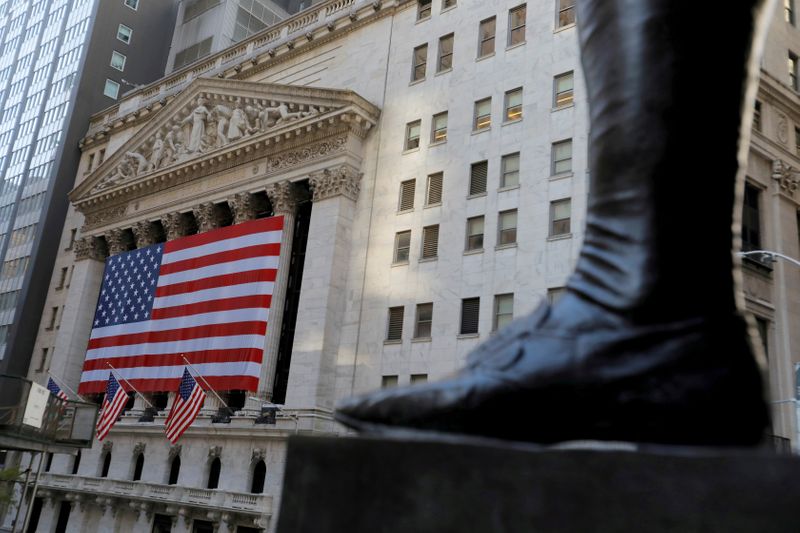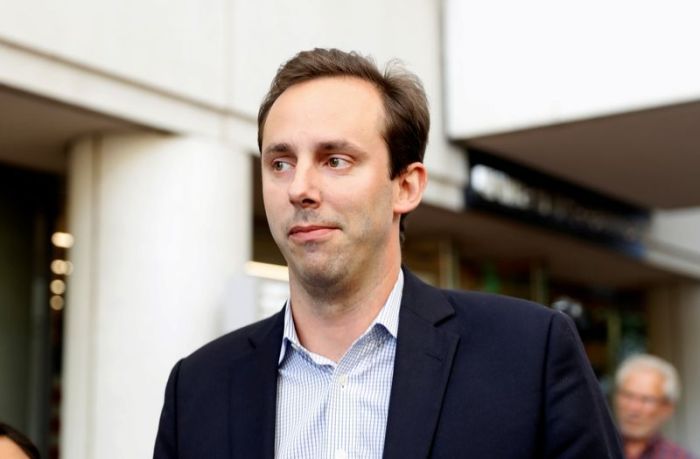NEW YORK (Reuters) – As Joe Biden takes over the presidency, investors are trying to determine how much fuel is left in trades betting on his policies, which have sparked outsized rallies in everything from cyclical stocks to shares of solar-powered companies.
Overall, the broad S&P 500 has rallied nearly 13% since the Nov. 3 presidential election, with gains concentrated in sectors expected to benefit the most from policy shifts expected under a Biden administration.
While stimulus, green policies and infrastructure have pushed the broad market to record highs, some investors are growing concerned that the rally may have run too far ahead.
Democrats’ slender majority in Congress mean the final shape and timing of many Biden policies – including a proposed $1.9 trillion stimulus package – remain uncertain. Meanwhile, valuations on the S&P 500 are approaching levels last seen in the Dotcom era, while hiccups in the U.S. vaccine rollout have dented optimism over a broad economic reopening.
“If you ask me to predict if the next 5 to 10 percent move is more likely up than down, I would say it’s more likely down,” said Ernesto Ramos, head of equities at BMO Global Asset Management. “The market has so relentlessly gone up and valuations are frothy.”
As a result, Ramos is becoming more bullish on cyclical and value stocks that would benefit from a sharp rebound in the economy at the expense of large technology stocks that powered much of the S&P 500’s rally in 2020.
“You do have elevated valuations, no question about it, but value is comparatively cheap and we don’t think a 6 percent GDP growth rate this year is fully priced in,” he said.
Overall, value stocks in the S&P 500 trade at 17.1 times forward earnings, while growth stocks in the S&P 500 trade at 29.2 times forward earnings, according to data from Refinitiv.
STIMULUS SURGE
Biden outlined a $1.9 trillion stimulus plan last week, arguing that bold investment was needed to jump-start the economy and accelerate the distribution of vaccines to bring the coronavirus under control. Janet Yellen, Biden’s nominee for Treasury secretary, urged lawmakers in her confirmation hearing on Tuesday to “act big” on the next coronavirus relief package.
Analysts at Goldman Sachs Group raised their 2021 U.S. growth forecast for the second time this month, to 6.6% from 6.4%, in the wake of Biden’s stimulus proposal. [L1N2JR0I2]
Yet analysts at Bank of America Global Research cautioned in a report on Monday that stocks are already trading as if the vaccine roll-out and economic rebound will be smooth over the spring and summer, limiting further upside. The bank kept its year-end target for the S&P 500 at 3,800, flat with current levels.
Investors should instead focus on sectors such as electric vehicles and cyber-security that will see a long-term benefit from Biden’s policy moves, said Dan Ives, an analyst at Wedbush Securities.
“One of the core underpinnings of the Biden platform will be around pushing clean energy,” he said. That will likely continue to lift shares of companies including Tesla Inc, General Motors Co and Ford Motor Co higher.
Charles Lemonides, portfolio manager of hedge fund ValueWorks LLC, said the broad rally in the stock market in anticipation of stimulus spending will narrow as investors hone in on the companies that are taking market share from rivals.
He has been rotating some of his portfolio into cyclical value stocks such as Bed Bath & Beyond Inc and Tidewater Inc, while expecting that the so-called FANG stocks, such as Facebook Inc and Netflix, will flat line after their strong outperformance over the last 12 months.
“There will be a huge difference between winners and losers from the changes in Washington and the trends in place over last year will not be the same trends going forward,” he said.
(Reporting by David Randall; Editing by Ira Iosebashvili, Megan Davies and Dan Grebler)

























